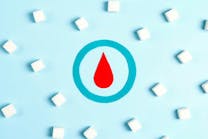Digital cell image analyzers, which automate the WBC differential process, are becoming standard equipment in busy laboratories. Cell image analyzers are allowing automation to enter into the realm of hematology smear review, which has traditionally been a very manual and labor intensive task within the laboratory. These analyzers locate cells on the glass slide, and use digital image technology to present the operator with a pre-classified listing of white blood cells which can increase the speed and accuracy of WBC differentials. This technology is assisting hematology laboratories to better meet the demands for increased testing volume with shorter turnaround times.
In addition to the WBC differential, cell image analyzers also assist with red cell morphology assessments and platelet estimates through automation. Staff shortages and the lack of experienced hematologists are two reasons that laboratories of mid- and large-size hospitals are deploying these analyzers to provide 24/7 expertise for the important differential portion of the CBC. Although digital cell image technology has been available for several years, the refinement of the technology and the ability to integrate cell image analysis into hematology automation lines has stimulated laboratory interest.
Automated CBC analyzers
Ten years ago automated CBC analyzers would flag qualitatively abnormal samples for microscopic review by a laboratorian. Typically these were samples with immature or abnormal white cells and could make up 25% to 30% of a daily workflow. In 2005, studies were undertaken at Massachusetts General Hospital to report on the accuracy of white cell classification by an automated analyzer versus a microscopic differential review by a laboratorian.
The study1 reported that new cell recognition software had a sensitivity of 95% and a specificity of 88% for immature myeloid cells. It was also highly specific and sensitive for blasts: 100% and 94% respectively. For unusual WBCs and nucleated RBCs, sensitivity and specificity were 100% and 97% respectively.
Today, these analyzers are being integrated onto fully automated hematology lines to report results that can be used as a part of an auto-verification system for reporting CBC and differential results with minimal review time when combined with the use of laboratory defined, rules-based middleware.
The benefits of standardization
Cell image analyzers promote a more standardized differential result throughout a single laboratory or an entire integrated healthcare network. Automation helps to remove the inherent subjectivity demonstrated with manual microscopic analyses.
The automated analyzers will provide a standardized teaching platform when also used for staff training. Additionally, they can assist to improve the morphology skills of a laboratory’s entire staff, which may be rotating through the hematology department on varied schedules.
Workflow improvements
Using a digital cell image analyzer, a laboratorian can view cells that have been pre-classified by the software to improve the accuracy of cell identification and proper reporting of the differential. An on-board library of reference cells will assist less experienced morphologists to identify cell types more efficiently.
Through the use of optional remote review software, multiple differential stations can be established throughout the laboratory by using existing network PC workstations. This will also contribute to a decrease in turnaround time even during peak volume hours.
Differential workflow has traditionally been a challenge especially when dealing with leukopenic samples. Automated cell image analyzers typically have the ability to merge multiple slides made from low white count samples into a single case, eliminating the need for a buffy coat preparation prior to a manual differential.
Finally, the ability to automate body fluid differentials can also become a reality with optional add-on software, streamlining lab workflow to an even greater extent.
Connectivity adds value
What makes cell image analyzers even more valuable today is their ability to support clinicians with real time differential expert consultation. This is easily accessible through the analyzer’s ability to share the cell images over the hospital network. Similar image sharing has been shown to be of high value in the field of radiology. The use of digitally captured images allows computed/digital radiography to be practiced in virtually any setting. Digital cell image analyzers translate the same flexibility for “electronic-consulting” capabilities now for digital hematology.
New levels of connectivity between clinical laboratories and clinicians mean that digital cell images of interest can be shared both for the purposes of consultation and education regardless of location. Hematology laboratories can now connect with one another and with off-site expert support from pathologists and/or morphology experts. This is particularly important in hospitals that may not always have pathologists on site.
The power of integration
It is indeed a brave new world: Today’s laboratorian can place a primary tube in a sample rack, then place it on an analyzer, and then walk away to perform other critical testing within the lab. He or she can then return to find that the sample has a complete CBC result. If that result is outside of normal parameters, as defined by onboard rules, one or multiple peripheral blood smears have been automatically prepared, robotically fed into a cell image analyzer, yielding pre-classified and sorted cell images ready to be displayed on a high-resolution monitor.
Through a routine review process, the complete hematology profile for this sample can be released rapidly into an LIS or hematology middleware solution. The technical refinements to digital cell image analysis allow the differential to be as accurate and reproducible as other parameters within the CBC. Easily stored images can be made available for supervisory or hematopathologist review and help standardize teaching within and across health network sites. They also offer bi-directional communication with the LIS to support automated reporting to the patient’s chart.
Carl Trippiedi serves as Senior Product Manager for Sysmex America, Inc.
References
- Katz A, Beng HI, Casey JE, et al. Performance evaluation of the CellaVision DM96 System. Am J Clin Path. 2005;124:770-781.





